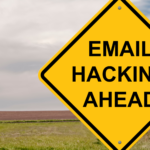“Excuse me, this chicken is raw on the inside. Can I have a word with your chef?” is something you would expect Gordon Ramsey to say on most of his videos where he goes to restaurants and tries out their food—albeit with more colourful language usually.
Security professionals are constantly looking out for commendable security measures and security issues that require attention. But, unlike raw chicken that would almost instantly make someone sick and is something noticeable by most, security is unfortunately not something people consciously think of and, a lot of the time, don’t take seriously in the first place.
You Can’t Come in, You Say?
I was trying to get a new discounted gym membership for that specific day. I had an hour or so before they closed, so I needed to have everything in place to score the sweet sweaty deal. I approached the gated community’s gate barrier and waved to the guard, who promptly opened the gate for me to pass. Sweet!
I got into the gym building, a commercial building that disables free entry into the reception area after hours. The guard would not look my way as he was busy with his phone. Despair not! There is a café within the building with a door leading to the building. I walk in and greet the security guard, who responds without looking away from his phone. I continued to the elevator lobby, where I went to the floor and got informed to find the gym. Shortly after that, I realized that I pressed the basement by mistake and realized I was in the middle of the loading bay area.
This whole experience took a whole of ten minutes or less: From the moment I waved at the guard by the gate to the time I stood in the loading bay next to a mountain of new laptop boxes. Not a single security measure—physical, procedural, or electronic—that I encountered remotely hindered my clumsy entry path to reach the gym.
What Just Happened?
Let’s recap my experience at that facility:
- The gate guard: Did not carry out the primary task assigned to him: Check my identity and whether I was authorized to enter the community at all. According to Boss Security, here are some tips guards can implement to prevent this procedural failure, for starters.
- The building entry: Disabling free access but leaving an unsecured path through the café—physical design failure. The guard not bothering with me—another procedural failure.
- Reaching the loading dock: The lift did not restrict access to private/critical areas—electronic security design and planning failure.
Physical security plays a vital role in preventing security breaches. But, one slip up, and your business suffers a big blow! Well, how could we avoid a compound lottery of mistakes then?
- Assessment: What are you trying to protect? What are the threats that the protected assets might be vulnerable? What is the priority of the risks?
- Planning: Understand your facility correctly and plan the correct paths and type of security required. Security is not only card readers or guards. It is a concerted effort that combines physical, electronic, and operational elements working in unison to make up a robust solution.
- Execution: The above two points will be useless if the measures’ implementation fails. Case in point: The guards were present in their correct positions but were not bothered by my presence at all.
- Maintenance & Continuous Training: It’s not over when the execution is signed off. Systems need maintenance and upkeep (and facilities change), personnel need initial and continuous training, and procedures need reviewing to ensure that the entire security posture provides the expected level of protection for the organization. We have tips on including your whole organization to implement security best practices in the workplace.
Now, repeat after me:
“Lord, grant me the serenity to deal with people who will not secure their facilities, the patience to face them when they blame me for their problems, and the wisdom to go out drinking afterwards”.

